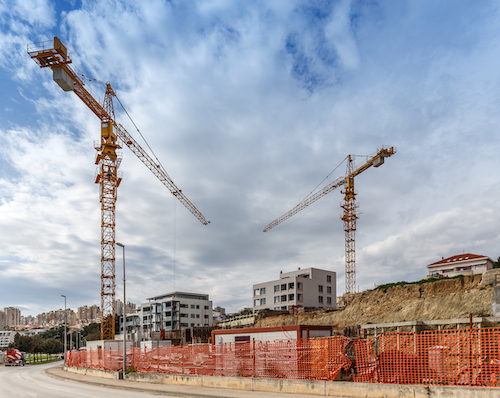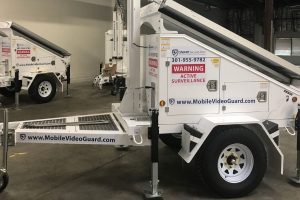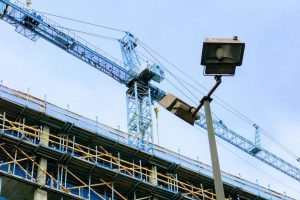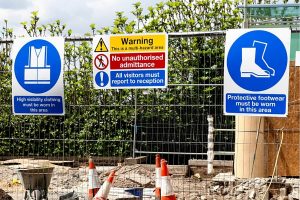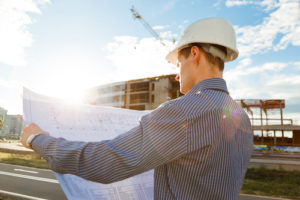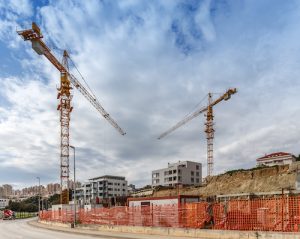How To Prevent Construction Site Theft
When it comes to the topic of safety in the construction industry, most construction managers immediately think of their people.
Construction workers, project managers and anyone else who visits the construction site are always at risk. Especially when there’s a lot of heavy equipment and building materials around.
It’s inevitable, the materials are the substance of the construction site that brings new ideas to life.
It is all so exciting, but keeping people safe with protective gear and more is certainly an element of job-site safety.
There is however another element of safety to consider.
Construction managers should be on the lookout for the safety of their building materials and equipment.
Your heavy machines and construction materials may not need the protective gear your people need, but you should be concerned and thinking of ways to keep them safe nonetheless.
Here’s why: according to the National Equipment Register (NER), heavy equipment theft has been on the rise the past couple of years with 11,625 thefts being reported to law enforcement in 2014.
As a construction manager, your attention may be pulled in all sorts of directions every day, being on-site is a complex job.
Setting a good foundation for protecting your equipment, just like protecting any workers or visitors to the site, is of the utmost importance when completing a construction project.
When theft occurs, you not only lose time, but you could also lose money.
Your employees and your reputation can also be at risk if you cannot keep control of your entire worksite and everything (and everyone) that is part of it.
Below is the ultimate guide to preventing construction site theft, all it takes is three simple steps!
1. Invest in Technology.
No matter how tech-savvy you might be, you’ll likely need to do some due diligence and research when it comes to picking out technology to keep your worksite safe from theft.
One common mistake construction managers make is treating their job site as their home.
Therefore, they are inclined to consider and purchase technology used to keep residential homes safe, like security cameras, motion alerts and more.
While all of those features and functionalities should be part of the package, they shouldn’t be the only tech solutions you have on-site to keep your materials and equipment safe.
There is a lot of new technology to explore and discover what fits your needs.
For example, radio-frequency identification (RFID) technology can help you keep track of which tools were checked out, and by whom.
If you have a lot of heavy equipment on-site then keyless ignition/transponder chip keys can also be a great addition to your strategy. They ensure that only one key is needed to use any of the equipment.
This makes stealing the machine worthless to thieves.
Depending on the job and the site, there are a lot of ways technology can help prevent thieves from derailing your construction project.
With the right technology you are off to a great start! Next Let’s ease our way into equipment management.
2. Create a System for Equipment/Material Management
A construction site inherently comes with a lot of processes and procedures to manage.
Big Projects need great management.
Diving into permits, paperwork and all of the administrative work can seem like a lot, and there is always more to consider when it comes to a construction site.
A project like construction requires certain materials, a large number of people and a mapped out an idea of how many hours it will take for the project to be completed.
A good construction manager already has ways for their workers to punch in, punch out and keep track of the time they’ve worked.
So why should it be any different for your materials and equipment?
If a good construction manager comes with some of the time-management processes already in place, a great construction manager will also have a way to manage their materials and equipment properly.
While technology can help you keep track of equipment, only a construction manager can determine when each piece of equipment is needed.
More importantly, a construction manager should know when the equipment is needed during the project so it can arrive on time — and not a minute before.
Keeping unnecessary equipment and materials around before they are needed is an easy way to place a target on your job site.
Equipment and materials not only need to be accounted for, but they should be scheduled to arrive (and leave, if applicable) in the order they will be used to complete the project.
A football field full of enticing materials like copper (a type of metal that is valued at the highest price for recycling) or heavy, expensive machines look like dollar signs to thieves.
3. Perform Background Checks
As a construction manager, you may spend a lot of time and money up-front to protect the comings and goings on your construction site- and it is important to do so.
You may purchase technology to monitor your construction materials, keep great inventory logs and have equipment deliveries and pick-ups scheduled down to the hour.
Hopefully, you put every safeguard in place to ensure that theft will not happen to you and your job site.
This includes hiring the best construction workers you know.
Some may be acquaintances, and some may be personal friends, some might even be new faces to you. But when it comes to business, especially a business that is laid out in the open for all to see, it is important to take your safeguards one step further.
Performing background checks on your construction workers is very vital. Get to know who your employees are.
Performing a background check, as well as sharing this method with your soon-to-be employees, may seem like a hassle and an unnecessary step for a well-seasoned construction manager.
But trying to confirm, to the best of your ability, that the people you have working with and for you are in good standing with the law is an important piece to your safety puzzle.
All of your security technology and preparations may not be able to stop someone close to the project who knows the ins and outs of your safety plan.
It’s important to know who you are trusting with expensive, critical equipment and materials.
Looking Forward
Theft happens; it’s part of the world and the reality we live in today. But it doesn’t have to happen to you.
The importance you put on establishing a safety plan for the workers at your job site should be the same as the importance you place on keeping your equipment and building materials safe.
New technology can help manage the safety of your machines and building equipment.
But you also need a great construction manager who is proactive and has all the proper logs and map outs of the assets on site.
And while these to-dos on your safety list goes a long way, knowing your workers — and if they’ve demonstrated criminal behavior in other aspects of their life before — is an important item too.
It’s likely that someone close to the project may see a loophole or an opportunity to benefit from it.
We hope this guide helped you get in the mindset for your next big project! These three steps can get you started today for a safer future.
Would you like to be able to manage and monitor your job site remotely? Click here to learn more about Video Surveillance as a Service (VSaaS).

